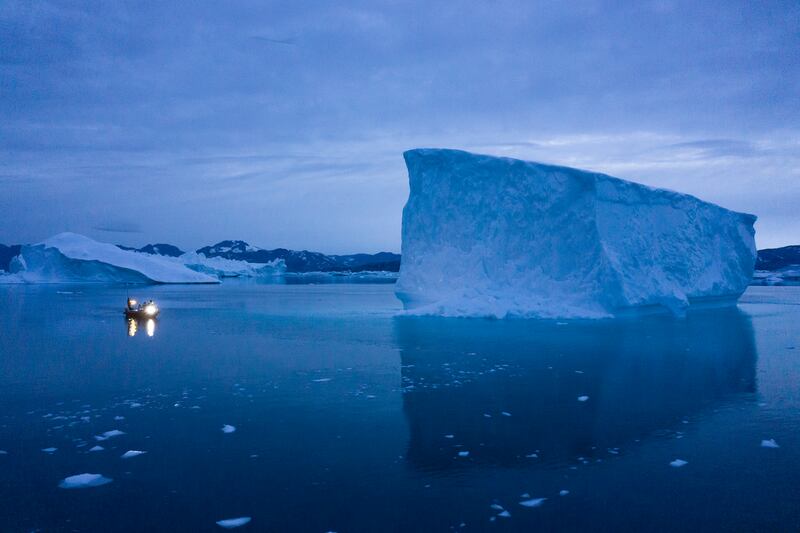Even if the world stopped emitting greenhouse gases today, the melting of Greenland’s massive ice sheets could raise sea levels by nearly a foot, according to a study published in Nature Climate Change on Monday.
What the study found: The researchers project that Greenland will lose 3.3% of its ice sheet mass, or around 110 trillion tons of ice. This will add at least 10 inches to the global sea level. The amount of water expected to be released is enough to cover the entire United States in 37 feet of water, according to The Associated Press.
The study doesn’t identify a specific time frame for the melting, but the authors said it could happen between now and the year 2100.
“The point is, we need to plan for that ice as if it weren’t on the ice sheet in the near future, within a century or so,” said William Colgan, a study co-author and glaciologist at the Geological Survey of Denmark and Greenland, according to The Washington Post.
Researchers point to “zombie ice” — ice that is still attached to thicker glaciers but is no longer being fed by them — as the culprit for the sea rise.
“It’s dead ice,” Colgan said. “It’s just going to melt and disappear from the ice sheet. This ice has been consigned to the ocean, regardless of what climate (emissions) scenario we take now.”
It’s “more like one foot in the grave,” said Jason Box, lead author on the study and glaciologist at the Greenland survey.
“It is a very conservative rock-bottom minimum,” Box said, according to The Guardian. “Realistically, we will see this figure more than double within this century.”
What it means: Researchers say the level of ice melt is unavoidable at this point. Their projections are more than twice the previous estimates of 2-5 inches released by last year’s Intergovernmental Panel on Climate Change report — though a comparison to the IPCC’s report isn’t perfect, because the newest report doesn’t factor in additional emissions or specify when the melting will occur.
Ten inches of sea level would have harsh consequences in the United States, and would be calamitous for many low-sea level and island nations. At last year’s COP26 summit in Scotland, the top diplomat from the Pacific island nation of Tuvalu gave a prerecorded address while standing up to his thighs in ocean water to illustrate the existential threat sea level rise poses.
In the U.S., the most catastrophic floods could occur five times as often with 10 inches of sea level rise, according to a recent report by the National Oceanic and Atmospheric Administration. Moderate floods would occur nearly 10 times as often.
Globally, around 680 million people live in low-lying coastal zones, and more than a third of the entire population lives within 65 miles of the ocean.
Hope is not lost: As dire as the team’s findings are, the research offers a glimmer of hope. Even if it’s too late to prevent significant ice melt and sea level rise, cutting emissions to prevent further warming can fend off even more catastrophic possibilities.


